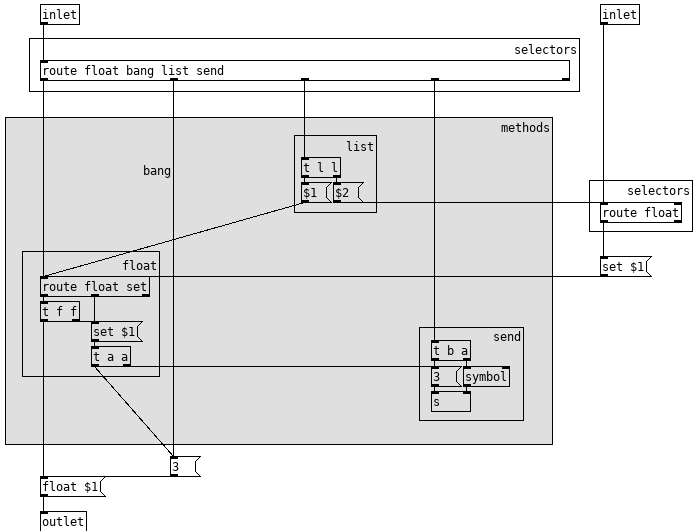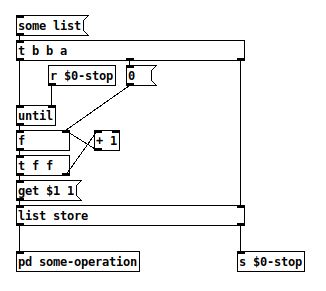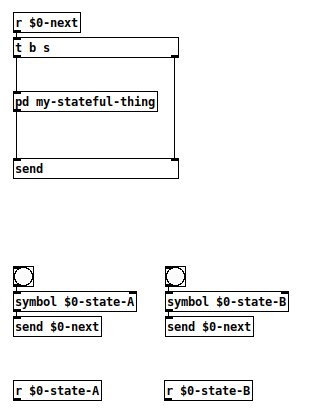@oid said:
@gentleclockdivider said:
The message c3 f3 a3 , the first selector is c3 and thus this message is an implicit symbol , correct ?
No, it is just a message, to be a symbol it would need the symbol selector. We have three selectors; float, symbol and list, when an object gets a message it checks for those selectors to make sure it is getting the correct type of data, if it lacks one of those selectors it treats it as a method like 'set' so your [list store] knows it should set its internal state instead of operate on the data and produce output. The alternative would be to have reserved words which you would have to escape or add a selector to, so if you wanted a [list] to store the message [set 1 2 3( you would have to do [list set 1 2 3( or [\set 1 2 3(. The pd way avoids reserved words which means we don't have memorize a long list of reserved words, just the three selectors and the mostly consistent ways they are handled.
Next , the message c3,f3,a3 , three messages after each other each with a symbol identifier
None of those have a symbol selector, those are just three messages. You can run those through a [symbol] instead of a [list] and for this sort of thing that is a good idea, explicitly states that it is a symbol so you don't have to trace the patch to figure out what is going on.
But the manual clearly states that the first atom in a message is the selector , and for mesage c3 d3 e3 , the first atom is c3 .
Isn't c3 a symbol , it starts with the letter C ?
When the message is separated by commas , and send though a list , the console clearly shows these are seperate symbols , why then ?
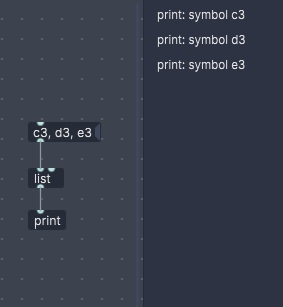
To be fair , I think pure data is a million times more complex than supercollider or anything else I have worked with
Manual :
quote
Messages contain a selector followed by any number of arguments. The selector is a symbol that defines the message type. The arguments are anything that follows and may be symbols or numbers (aka atoms). For instance "list a b c" has a "list" selector, which defines the "list" data type, and "a b c" is the actual message. This message is only composed of symbols but a list message can combine two or more symbols and/or floats.
unquote


 it's telling it as it is...
it's telling it as it is...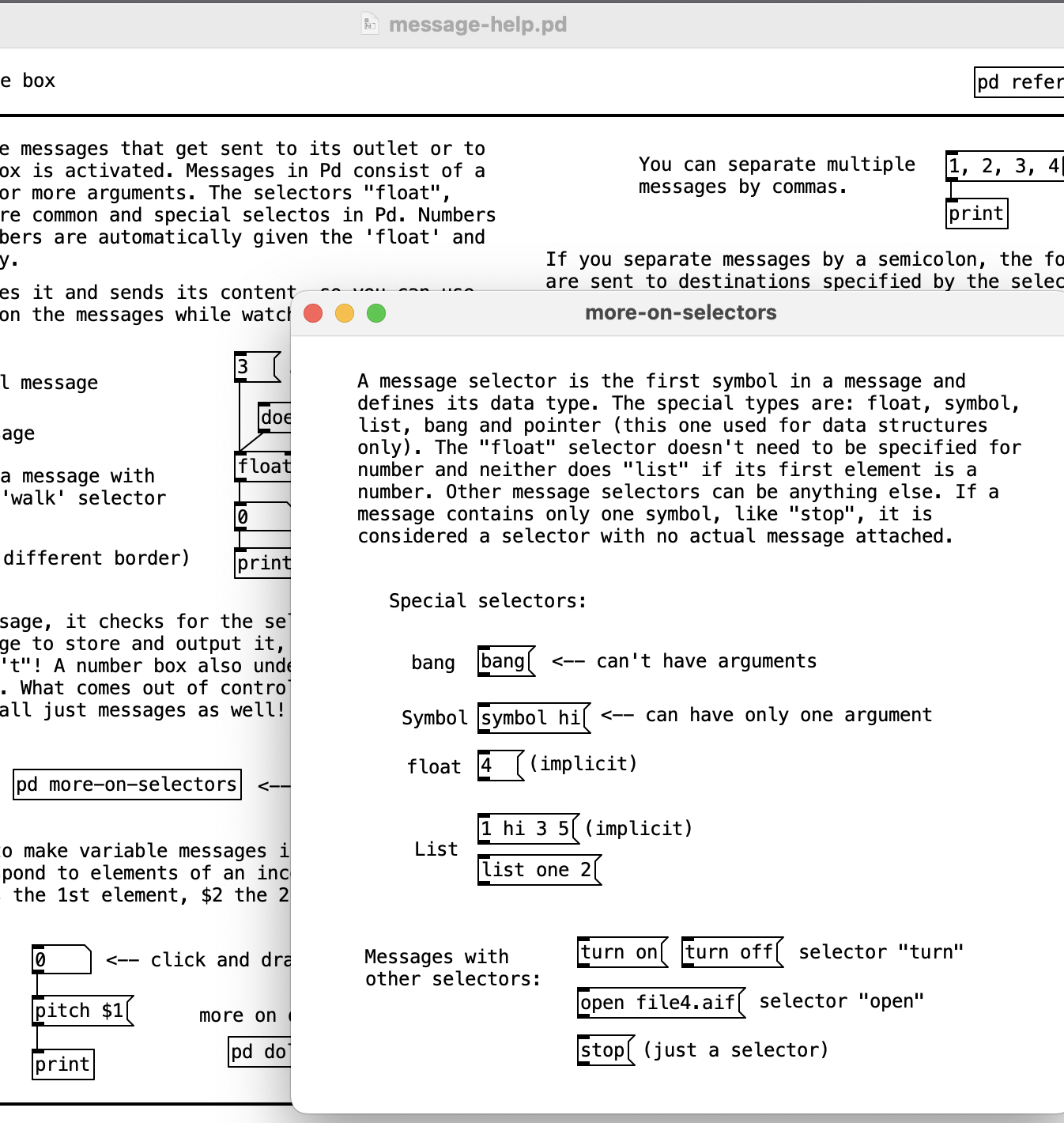
 ).
).